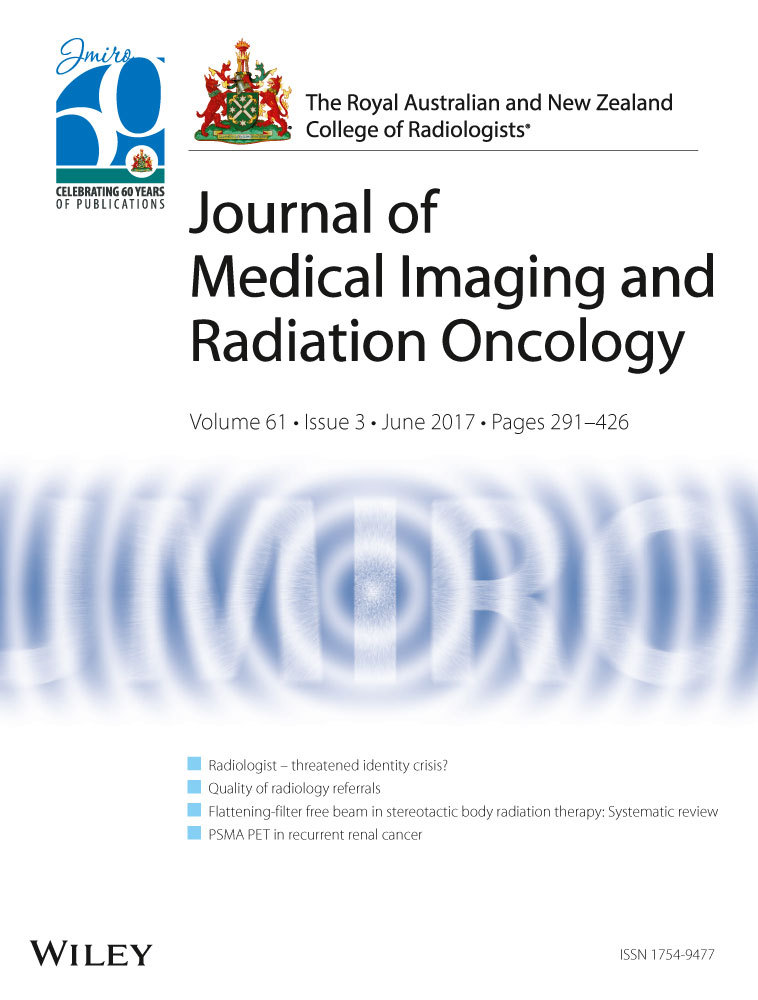CT brain perfusion: A static phantom study of contrast-to-noise ratio and radiation dose
Abstract
Introduction
Computed tomography perfusion (CTP) is increasingly employed in the diagnosis and management of ischaemic stroke but radiation dose can be significant and optimising contrast-to-noise ratio (CNR) is challenging. This study aimed to quantify and optimise the balance between CNR as a surrogate for image quality and radiation dose.
Methods
A perspex head phantom with vials of dilute contrast agent was scanned using a Siemens Definition Flash 128-slice scanner. The CTP protocol exposure parameters were adjusted over 70–120 kVp and 150–285 mAs. Measurements were obtained for the average dose per slice, Hounsfield Units (HU) for iodinated contrast agent, and the image noise for background regions of perspex. The CNR was measured as a function of the volumetric CT dose index (CTDIvol) and kVp.
Results
A change from 120 to 80 kVp, achieved the same CNR with 60% reduction in dose. Alternatively, for the same dose, the change from 120 to 80 kVp improved CNR by +58%. A change from 80 to 70 kVp while operating at the same CNR, led to 13% reduction in dose. Alternatively, maintaining the same dose while changing from 80 to 70 kVp improved the CNR by +7%.
Conclusion
Lower beam energies achieved the same CNR with less dose, or improved CNR at the same dose. A reduction from 80 kVp to 70 kVp may be clinically useful to optimise CTP acquisitions.




